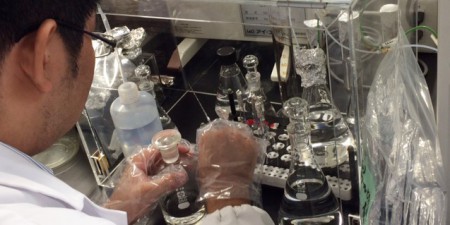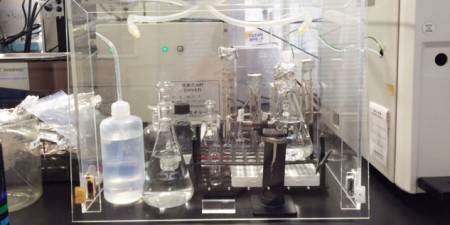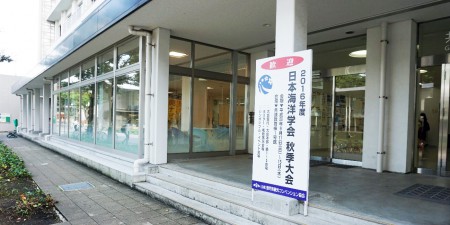My Research: Operation of Total Organic Carbon Analyzer – M1 Koh Kishinami
Hi, I am Koh Kishinami, a 1st grade student of master course in this lab since this April.
This is my first report to introduce my study. Actually, I focused on phytoplankton research when I was an undergraduate student, and I’ve been absorbed in studying chemical oceanography and analytical chemistry since my entrance into graduate school. Many students in this lab seem to have longed for chemical approach to marine environment research while studying mainly biology and ecology in their collage days, according to my elder colleagues.
In my master course period, I’m planning an experiment of microbial decomposition of labile organic material like glucose as a sole carbon source in aerobic/anaerobic artificial seawater. Here, instead of showing whole detail of my study, let me explain simply how to deal with and to operate Total Organic Carbon analyzer (TOC), which is one of essential equipment to carry out my study, and I’m mainly studying nowadays.
The basis of measurement of TOC would be described briefly below; oxidizing dissolved organic carbon (DOC) in seawater sample to CO2 in a column with catalysts at 680 ℃ (that is, high-temperature combustion oxidation method), and measuring the amount of CO2 gas with a detector in which infrared light is used. Seawater samples, however, contain also inorganic carbon, such carbon must be removed before analysis. So samples are acidified with hydrochloric acid, and bubbled to remove CO2 gas released by acidification. After these protocols get completed, the measurement starts.
The purpose of this experiment is to measure the concentration of DOC in seawater, however, organic matter exists around us. Also, our human body consists of large amount of organic matter, such organic matter could be a contaminant for seawater sample. To avoid contamination, samples and equipment must be treated carefully. For instance, preparation of standard solution for making calibration curve as well as pretreatment of sample before measurement is conducted in a case with clean air. Analyzer is also so delicate that we easily observe data with no reliability and repeatability, if we forget to treat items carefully. These tips are just a part of all techniques to be achieved, and I’m learning how to operate TOC so that I can perform all of tips accurately. In order to execute progressive research, we’re supposed to devote ourselves at first to practicing what we call ‘Protocol’ (in Japanese word, ‘Saho’) of sampling in the field as well as of experiment in lab, for getting data with both reliability and repeatability.
(M1 Koh Kishinami)
Samples and equipment must be treated carefully.
One of experiment apparatus.



